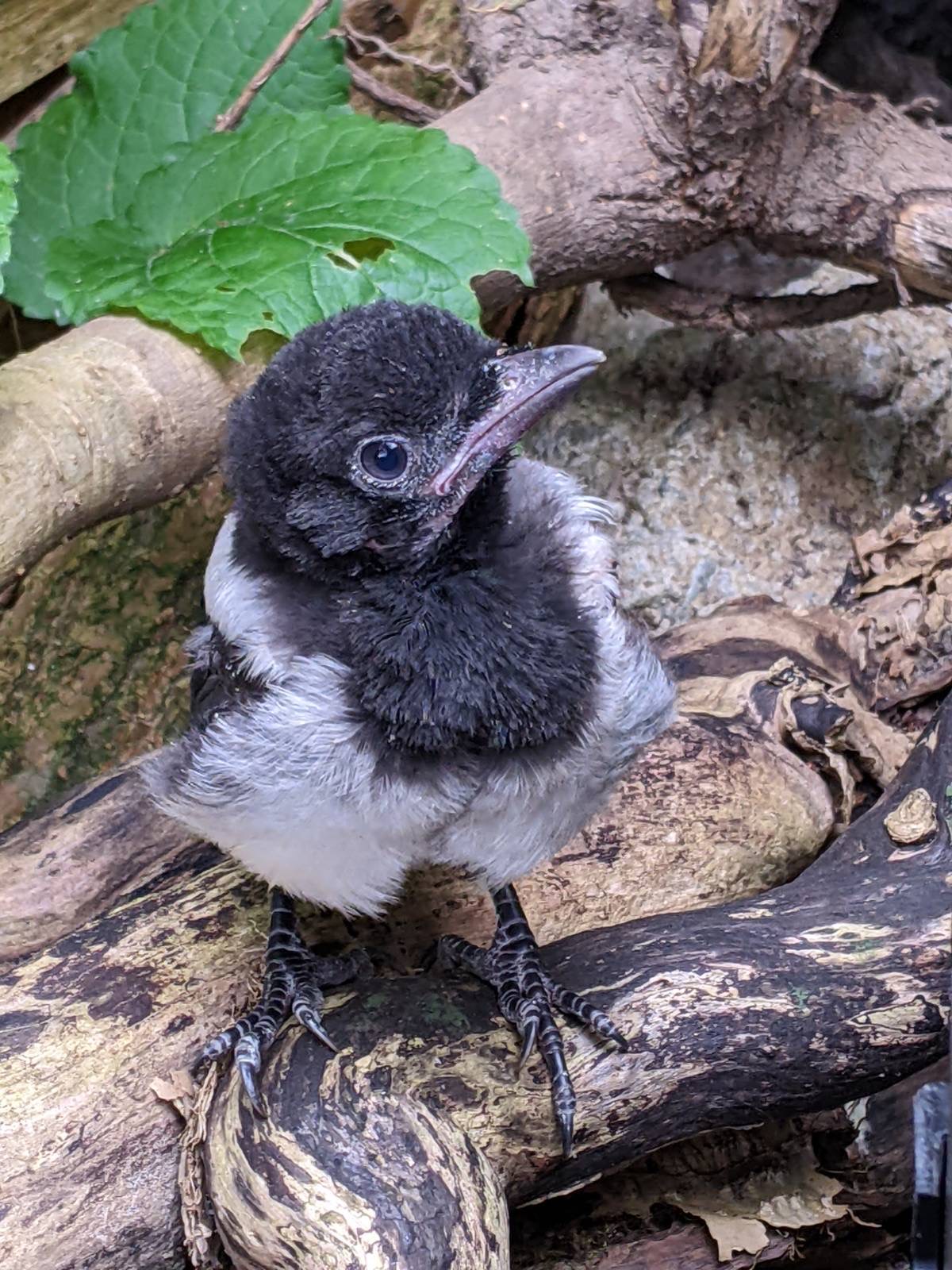Magpies and Mustard
17 May 2023

Realising belatedly that my ‘Jack-by-the-hedge’ is not only by the hedge but by the steps and by the swing-chair and peppered throughout the flower border, I began a strategic cull at 8 a.m. this morning.
Predictably, what started as a simple exercise to give the rudbeckias a break turned into a campaign as everywhere I looked there was yet more and more of the stuff. Up until now I had been enjoying its progression to one metre, with its strange, tiny and white, cruciform flowers stretching out the last 40 centimetres and reaching for the sky. A dim memory of being told that its young leaves were still used in salads made me regard it as a worthy plant, but not when I saw how it was outcompeting everything else nearby.
Garlic mustard is a native wildflower, and so common it doesn’t appear on the axiophyte list.¹ A biennial, it lies low for the first year, then flowers and dies the next. Found in hedgerows, roadsides, woodland, it’s all over the U.K. Beloved of butterflies, moths, beetles, and flies, it has many potential pollinators but doesn’t really need any of them as it can self-fertilize. So successful is its bid for colonisation that it’s a danger to the ecosystem in North America - introduced in the 1860s for culinary and medicinal purposes and now massively regretted. To us, over on this side of the pond, it’s just yet another brassica. Not to be confused with wild garlic, which is currently under threat of being over-foraged and sold to trendy London restaurants,² it may yet be revived as a sought-after source of nutrition. As harvests fail and food prices soar, I could well end up deliberately sowing it in future; its new leaves can be harvested and stored throughout winter, and it really is prolific.
As I weed out the native to preserve the non-native, I think about other species who find themselves on the wrong side of this divide. While I’m choosing to remove the garlic mustard in order to restore the rudbeckia (native of North America), I would happily remove all the cats that visit the garden in order to restore our depleted wild bird population. And an increasing number of countries are taking a similarly dim view of this destructive species. In urban areas the problem is not so much the existence of domestic cats but their vastly increased numbers. Popularity as pets and a penchant for predation makes them responsible for the deaths of an estimated 92 million prey 'items' over spring and summer in the U.K., ‘of which around 27 million are birds’.³
Listening to the magpie family shuffle and natter in the holly tree, all fledged now and rapidly gaining size, plumage, and aerial dexterity, I think of the little one buried underneath. He never managed to fly, and despite his siblings’ encouragement and their regular visits down to see him, he lasted only 24 hours before a cat appeared.
Magpie in the ground, garlic mustard in the compost heap, both rotting down to their constituent parts while the cats and rudbeckia thrive.
Only the images remain.

¹ Axiophyte: a ‘worthy plant’, used by botanists, ecologists and conservationists as indicators of habitat. BSBI, 2022, ‘Axiophytes’. Available at: https://bsbi.org/axiophytes Accessed: 17/05/2023.
² The Guardian, 2023, ‘Excessive foraging for wild garlic and mushrooms in UK ‘a risk to wildlife’’. Available at: https://www.theguardian.com/lifeandstyle/2023/may/13/excessive-foraging-for-wild-garlic-and-mushrooms-in-uk-a-risk-to-wildlife Accessed: 16/05/2023.
³ NBC News, 2022, ‘Why cats are an invasive species and what to do about it’. Available at: https://www.nbcnews.com/think/opinion/cats-cute-furry-cuddly-invasive-alien-species-rcna41768 Accessed 16/05/2023.
The Guardian, 2022, ‘Is it time to end cats’ right to roam?’. Available at: https://www.theguardian.com/environment/2022/aug/14/cats-kill-birds-wildlife-keep-indoors Accessed 16/05/2023.
RSPB, 2022, ‘How many birds do cats kill?’. Available at: https://www.rspb.org.uk/birds-and-wildlife/advice/gardening-for-wildlife/animal-deterrents/cats-and-garden-birds/are-cats-causing-bird-declines/ Accessed 16/05/2023.
